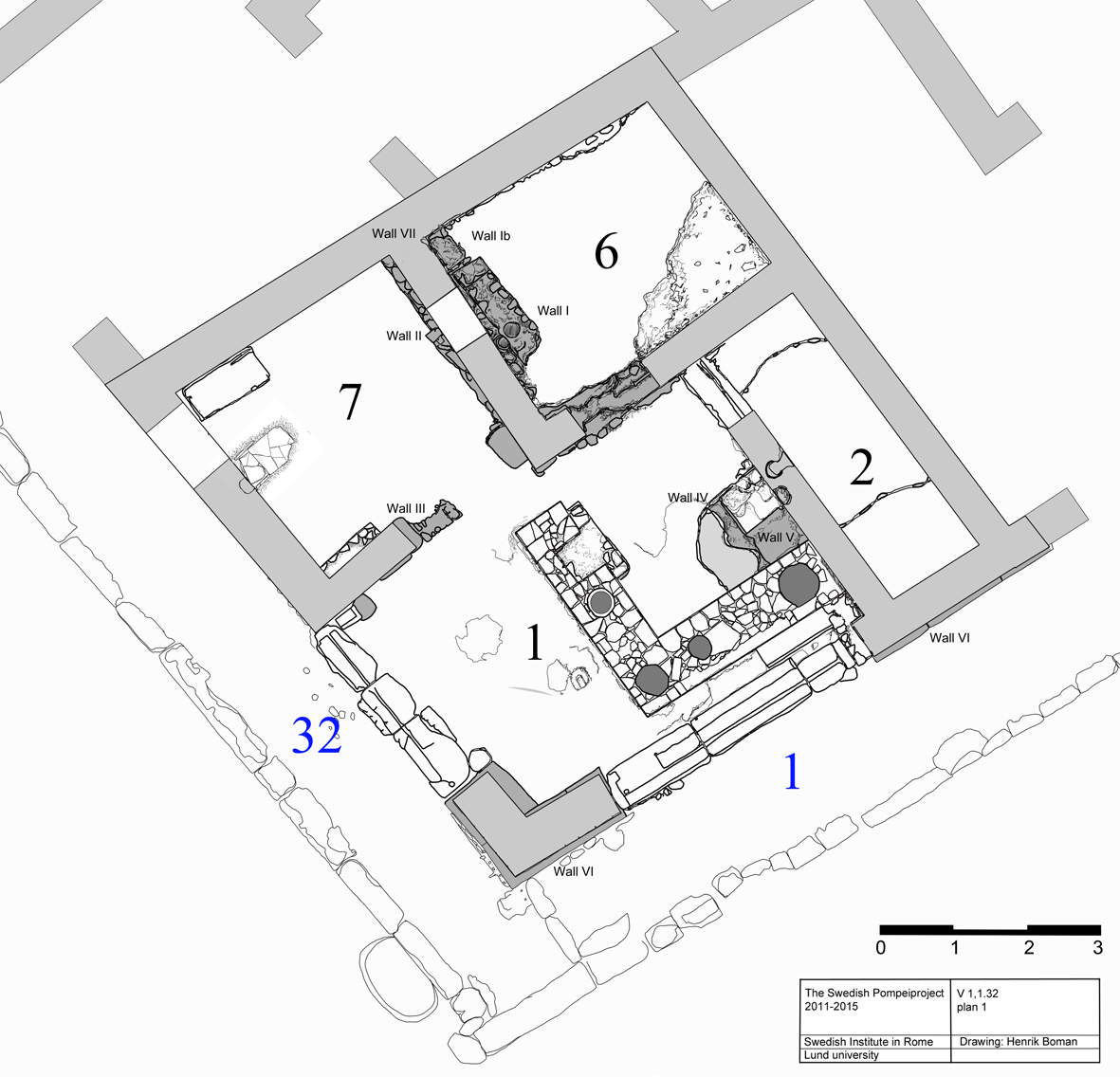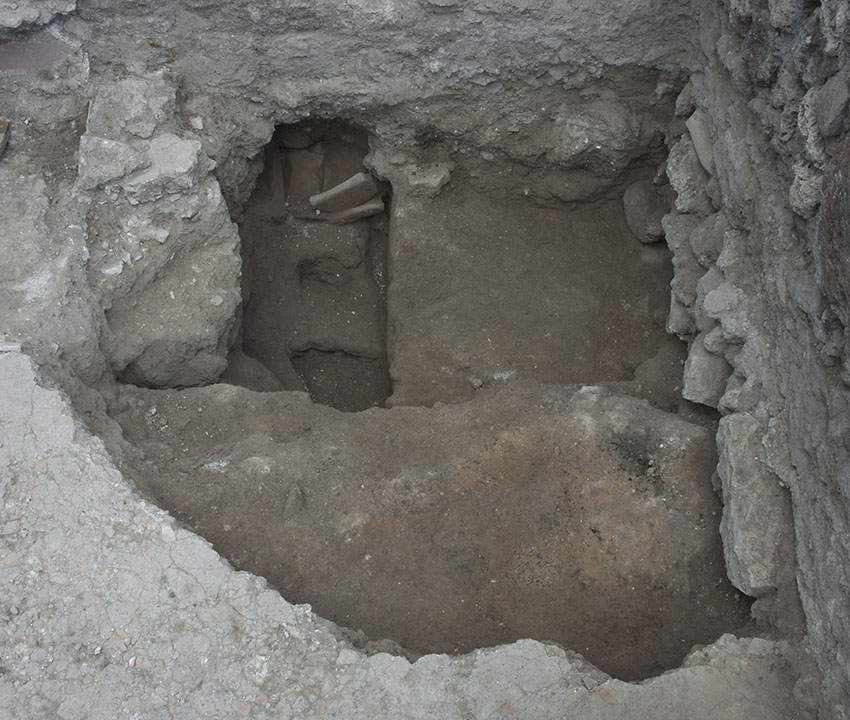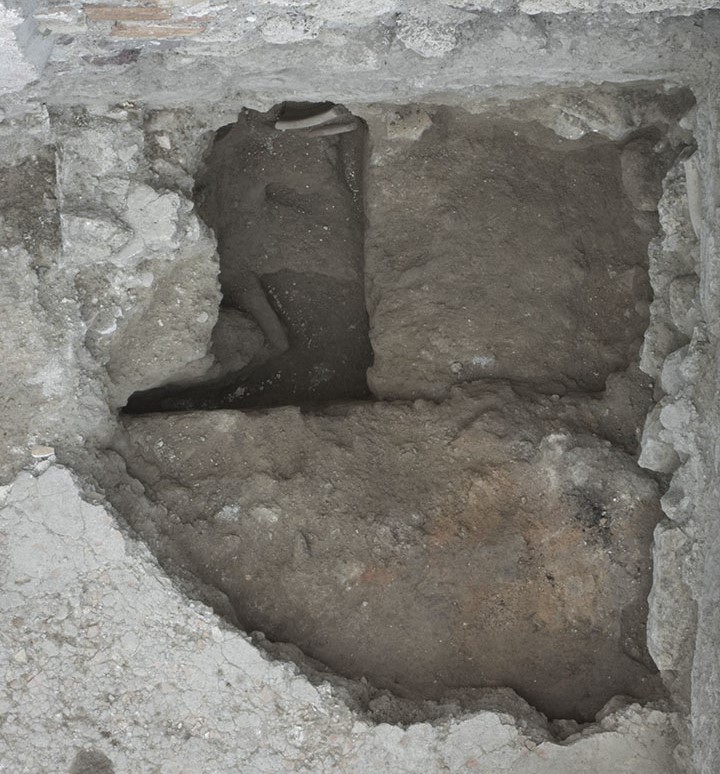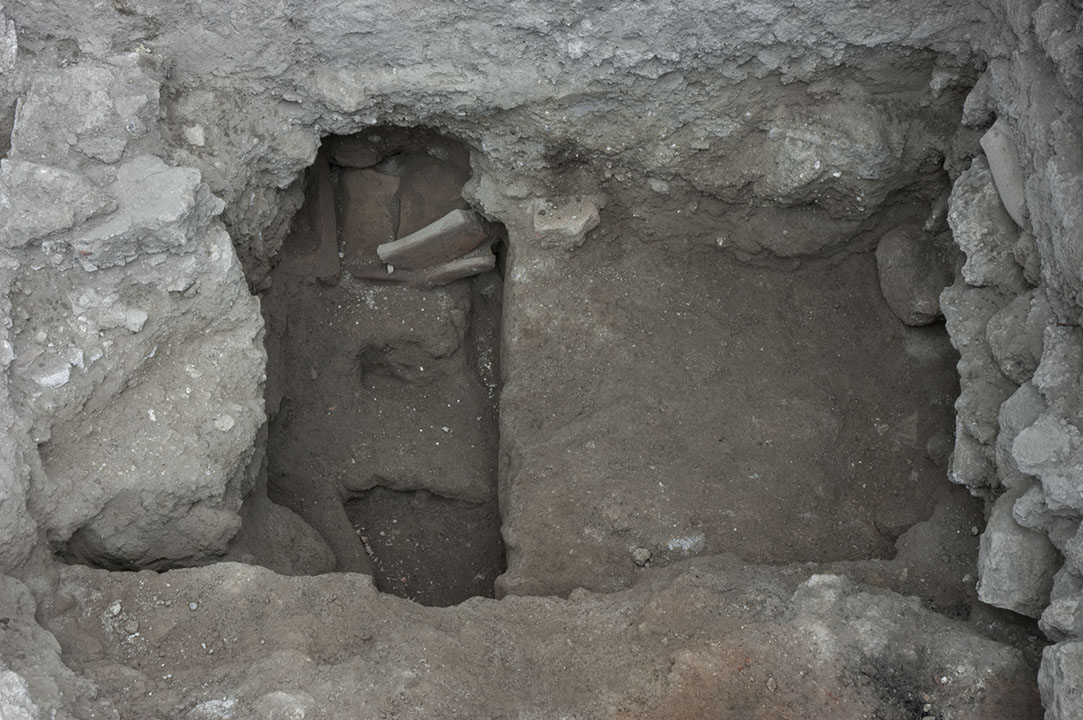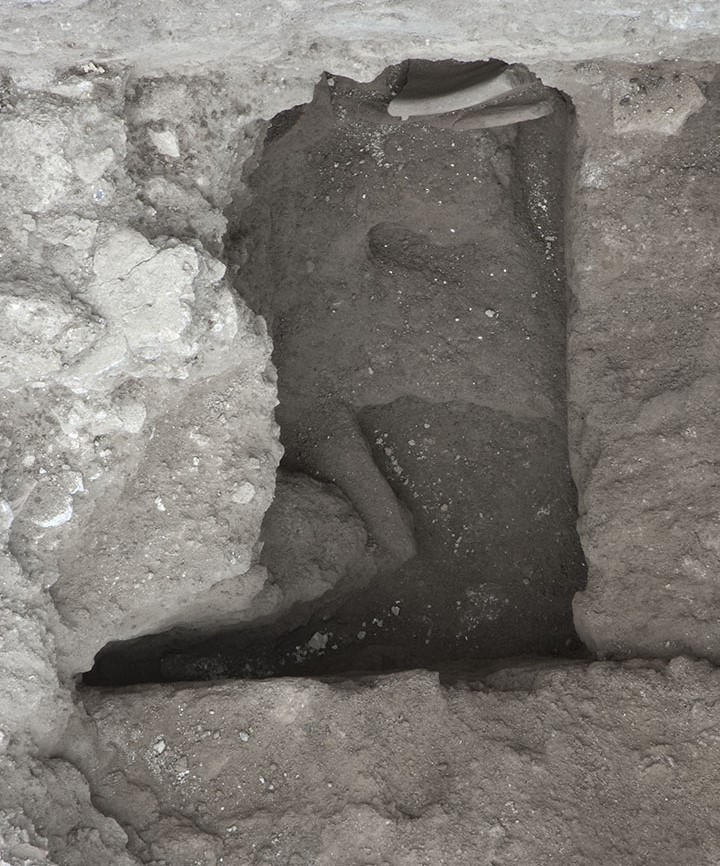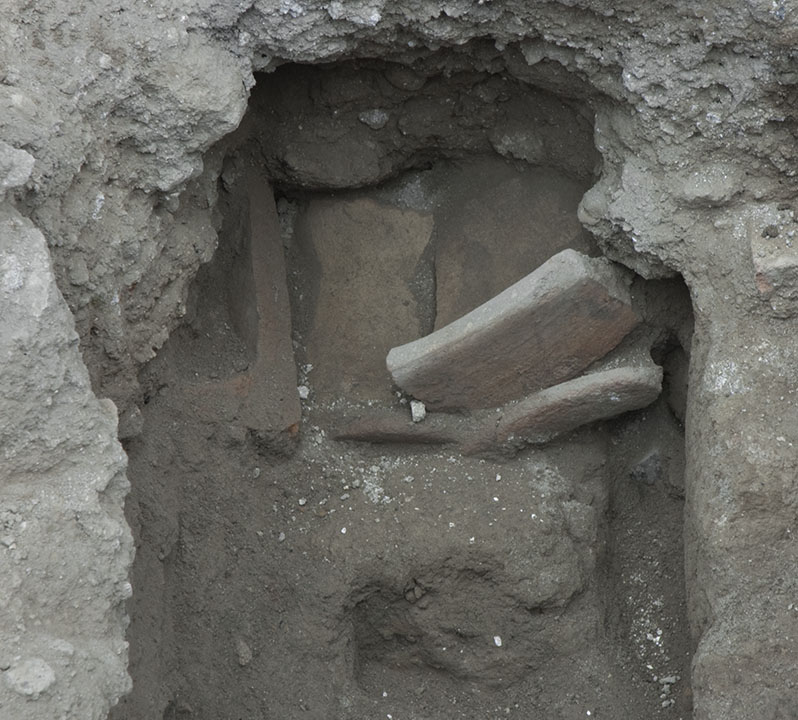Earlier remains
Description
Henrik Boman
Earlier remains in room 1
Under the main article of V 1,1.32, under the subtitle comments there is a description of all earlier remains in the house. Here you find descriptions of the individual rooms.
The floor was destroyed/missing in a large area in the SE corner behind the counter. In the void was an earlier floor level found (floor I) and parts of two walls (walls IV & V).
In room 1, the following structures emerged.
Wall III: Remains under the wall between rooms 1 & 7, with possible threshold stone in lava? Phase II.
Wall IV: Part of a wall (1.1 m visible of east face) in room 1: same orientation as walls I & II, but the wall is not in line with these structures. Phase I?
Wall V: Wall in right angle to wall IV, very fragmented and identification as 'wall' uncertain. Phase I?
Wall VI: Tufa foundations for the S façade of the insula. Acting foundation for Wall VII. Phase II?
Wall VII: brick walls now standing. Phase III.
Floor I — II
Two distinctive floor levels became visible in room 1, in the void described avove. Both floors were constructed in cocciopesto. The earlier (floor I) only visible in room 1. The floor II is connected to floor in room 2 by the threshold, today only visible by the imprint in the mortar (a wooden threshold?).
Floor I: An earlier floor level (floor I), c. 16 cm below the 79 AD level floor (floor II). Cocciopesto with clearly red character, large pieces of terracotta and c. 0.1 m thick.
Burnt debris found on the floor surface, no pattern detectable. The debris also visible where floor I continues under floor II.
Covers western part of wall IV. Large amounts of mortar makes the relation between floor I and the wall difficult to see.
The foundation of the counter seems to stand on floor I. However, where floor is broken, the foundation continues to lower level. This could indicate that the broken area of the floor actually contained some kind of structure or installation now completely lost.
This must be the floor in an earlier phase of the building, no walls could be connected to this floor, which partly is constructed above the earlier walls (first presumed to be a conduit).
Floor II: The existing floor in room 1, in cocciopesto. Connected to floor in room 2. Phase III, Connected to wall(s) VII.
The walls
The walls are all built opus incertum, the stones are discolored and it is not possible to determine which type of stone it is. Large amount of mortar used. Only c. 0.2 m of the walls was exposed. Plaster found on parts of the walls, though no wall paintings or other datable features other than the sequence between the walls were preserved.
Wall III
A fragmented wall, just visible in the door opening to room 7, with a lava stone that aligns with the stone in the same material in wall Wall II in room 7.
The wall III is constructed in large amounts of mortar, a simply construction and at present in a very bad state of preservations, especially the side facing north. The stones and mortar facing south is in line and constitutes a wall partly reused as foundation for the standing walls (VII)
The wall has a different alignment than the later walls (VII) and it corresponds to the lava block under the E wall in room 7: could be a two part threshold, though no cuttings for pivot or other structures are visible (though not possible to exclude since major part of the stone is concealed under the standing walls).
There is a preserved plaster layer in the center of the wall, however very fragmented: It continues around a possible corner, facing east and south (0.62 m from W), located as if it is a corner in a wall or some kind of structure. If the lava stone is a threshold, then this structure could be a partial closing of the door, a modification of the circulation pattern in the earlier layout of the taberna.
Large amounts of lose earth and small pieces of broken tiles in the area to the north where the N face of the wall is completely destroyed, as the remains appear today!
Wall IV in room 1
A wall built in earth mortar and stones, partly concealed under floor II: the stones visible c. 0.11 m below floor II, and for c. 1.1 m in length. The wall has a smooth surface facing east, no plaster or decoration visible. c. 1 m preserved, width not possible to see due to floor II.
Wall V
Wall built in earth mortar and stones, with a flat surface facing N, c. 90 degree to wall IV. No plaster or decoration visible. c. 0.6 m preserved, the width not possible to establish.
Wall VI: The tuffa foundation for the S façade.
The tufa foundation for the S façade extends out to the SW corner. The façade (wall VII) stands directly on these foundations, signifying that at least the large door opening to Via di Nola is of early origin.
The filling of the void: Fillings in the large hole in floor I and II, continuing below level of the two walls IV & V. There was lapilli mixed in the earth and volcanic ash, which might indicate that this is a robbing trench (?) or that the area at least was thoroughly search in the early days of the excavations.
The earth is very soft. Finds: pieces of pottery (large vessels) and roof tiles (with mortar applied, presumably reused material) and pieces of floor (c. 5 cm thick). Plaster found in this layer: red very thin fine plaster layer with soft gray under plaster with large white and small black intrusions.
Earth mortar found in large chunks, with a flat surface, and some with stone imbedded, indication some kind of collapsed structure, though the shape of the structure is impossible to establish.
Material in the lowest investigated level: At level with the walls IV-V there are several levels, all consisting of earth mortar, no systematic leveling or construction sequence possible to detect. To the east, in a cavity in the E wall, a concentration of tiles and large broken pottery was found. Parts of at least two larger vessels or terracotta structures, lying above an earth mortar levels (lowest surface investigated).
Vessel 1: with some kind of rim around and a circular forum of some significant diameter.
Vessel 2: Amphora like form, presumably a neck.
It is not possible to establish a clear relation between these element without further investigations.

